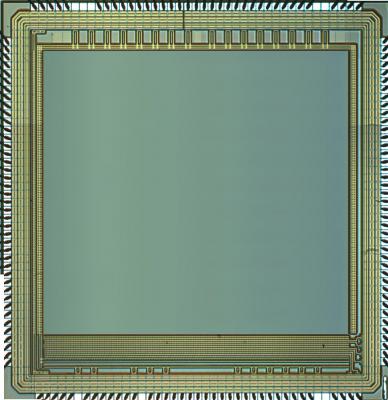Three-Dimensional CMOS Photon Counting for Medical Imaging and Cancer Diagnostics (SOLO3)
Research
Single-photon technology is one of the most dynamic fields in contemporary physics and electronics research. The emergence of monolithic technologies for detection and imaging of single photons and other quanta of energy is opening the way to better medical imaging and more accurate diagnostics, particularly in cancer detection, where spatial resolution is critical to early tumor detection and timing resolution in time-resolved systems, like time-of-flight positron emission tomography (TOF-PET), is ensuring high contrast and better signal-to-background ratios. Monolithic detection technologies, such as silicon photomultipliers (SiPMs), based on single-photon avalanche diodes (SPADs) are also enabling the emergence of multi-modal systems, such as PET-MRI, that are becoming the diagnostic instrument of choice for types of cancer for which early and accurate detection is hard.With this projectl we push SiPM technology to unprecedented levels of sensitivity and embedded functionality to achieve the levels of timing resolution that the medical imaging industry needs in this decade.
In this project, we focus on backside-illuminated single-photon sensor technology with extended sensitivity in ultraviolet wavelengths and advanced high-resolution timing electronics implemented in a three-dimensional structure embedded in the sensor itself. The goal is to achieve fully digital, large format CMOS sensors with sub-100-picosecond timing resolution and larger than 30% photon detection efficiency per pixel to be used in TOF-PET and PET-MRI imaging systems for early tumor diagnostics.
Application perspective
Our aging population gives rise to an increasing demand for cost-effective medical, biomedical, and biomolecular imaging techniques with increased sensitivity and specificity for earlier detection and more accurate assessment of disease, as well as for image-guided therapies and monitoring of the response to treatment of individual patients (personalized medicine).With large format single-photon sensors with high timing resolution and high photon detection efficiency, TOF-PET systems will become significantly cheaper to build and PET-MRI will become possible at reasonable prices. Other imaging systems, such as single-photon emission computed tomography (SPECT), will increase spatial resolution and field-of-view, thereby enabling better hart and lung diagnostics. The extended sensitivty range, thanks to emerging scintillating materials and fluorescence imaging, will also enable detection of coherent X-ray photons as viable complementary techniques to be used in diagnostics.
Such methods may also find applications in different fields such as material analysis. Thus, this program is expected to have strong impact in a diverse range of applications with great economic and societal relevance

Project data
| Researchers: | Edoardo Charbon, Chao Zhang |
|---|---|
| Starting date: | August 2013 |
| Closing date: | August 2017 |
| Funding: | 195 kE; related to group 195 kE |
| Sponsor: | STW-HTSM |
| Partners: | NXP |
| Contact: | Edoardo Charbon |